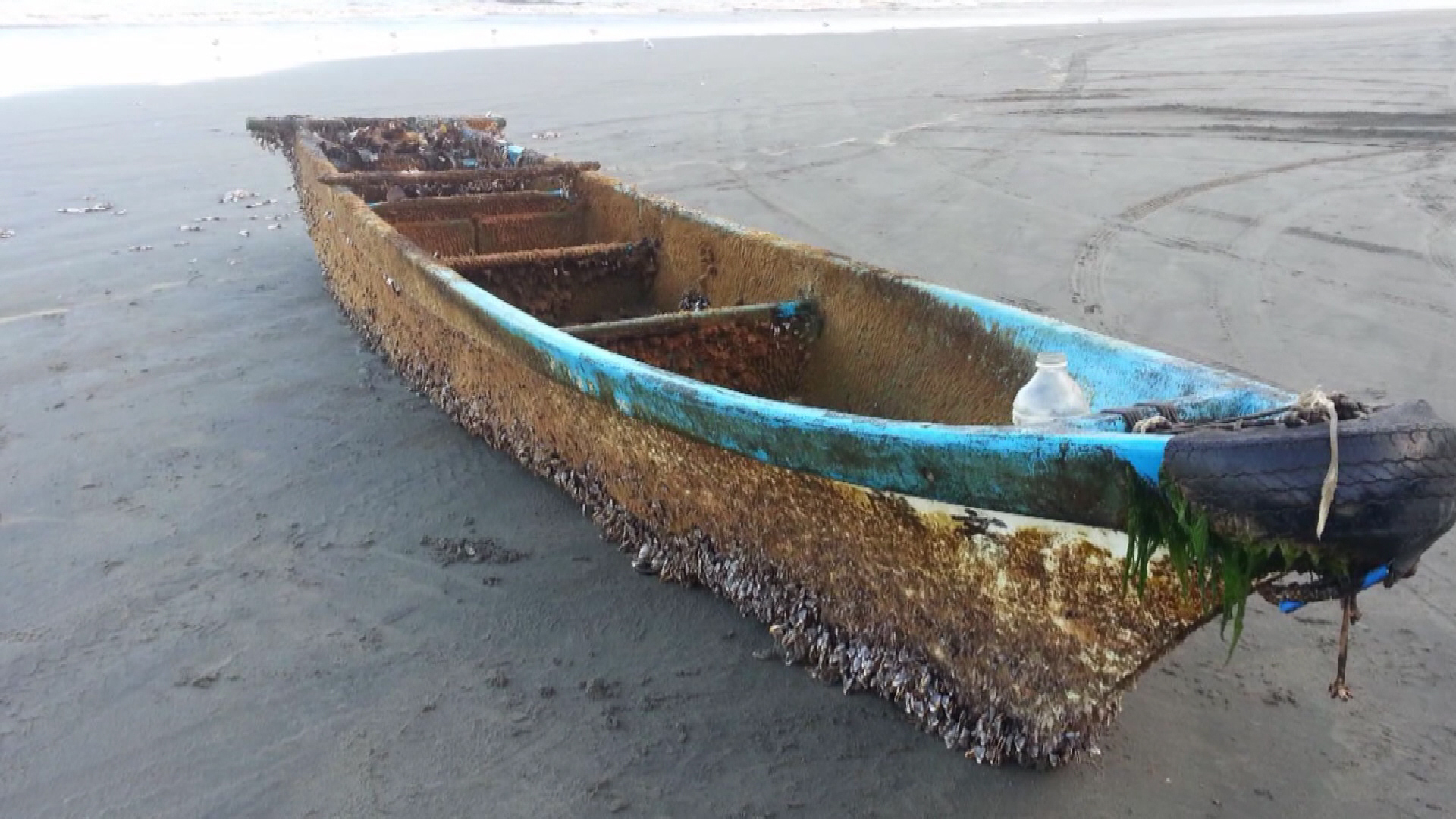PORTLAND, Ore. — Four years after a deadly earthquake and tsunami struck Japan, lost items are still washing ashore in Oregon and Southwest Washington. Scientists predict tsunami debris will continue to arrive for the next three years or longer.
An estimated 1 million tons of tsunami debris are floating in the Pacific Ocean.
"Last year there was a medley of stuff," said beach cleanup volunteer Russ Lewis. "Baskets started showing up, lids and lately a lot of culinary items."
Lewis spotted his first piece of tsunami debris, a large black float, in November 2011. Since then, he's hauled away truckloads of marine debris spread across a windswept stretch of the Long Beach Peninsula.
"When it first started out it was like a big mass of debris," said Lewis. "Then it started separating out. It's been kind of a progression."
The first pieces of debris to float across the Pacific Ocean included light items like chunks of foam that could easily be carried by the wind. Heavier items sitting lower in the water, like wood and tires, soon followed.
Many items washing ashore are small, with no names or markings. Larger items included docks, a Japanese gate and several fishing boats.
In 2013, KGW traveled to the tsunami-affected area in Japan to return several of lost items including a volleyball and part of a fishing boat.
Watch: "Washed Away"
Since June 2012, Oregon's Tsunami Debris Hotline has received 1,742 phone calls. The highest concentration of calls came from Lane County, with 331.
Researchers from Tattori University for Environmental Studies in Japan have been working with Oregon State University to track the movement of tsunami debris. The Japanese scientists released transponders about the size of two-liter bottles into the ocean.
"The units were initially set out about three months after the Japanese tsunami," said Sam Chan with Oregon State University Extension and Oregon Sea Grant.
The Japanese researchers have since deployed dozens of other transponders in hopes of replicating the movement of marine debris.
"We expected them to travel the major ocean currents," said Chan. Instead, Chan explained the transponders hugged the Japanese coastline for weeks or months before heading out over the open ocean. Researchers believe much of the debris is now circulating off the U.S. West Coast.
"That debris is probably still out there," said Chan. "Until local weather conditions move them ashore, the marine debris from the tsunami will be evident and might be evident for years to come."
On the Long Beach Peninsula, Lewis typically sees an uptick in debris when storms bring strong southwest winds.
"You go out the next day and the rack line has chunks of this stuff, you know up and down for miles." said Lewis. "I think there's more to come."
More: Tsunami debris FAQs


